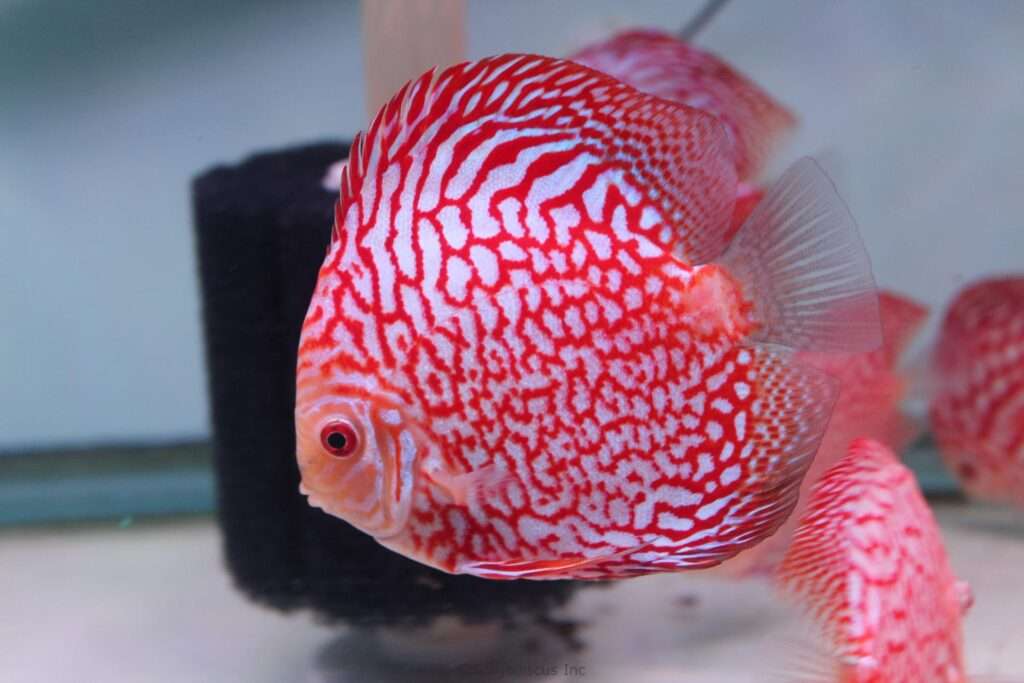
Size
Can reach a maximum length of 7-8 cm.
Physical Characteristics and Behavior
On the fishes’ flanks, vivid patterns in shades of green, red, brown, and blue are frequently seen. Aquarists have created artificial kinds with the most striking markings that are not present in nature. On average, adults weigh 150–250 g. (5.3–8.8 oz). Although there isn’t any obvious sexual dimorphism in this type of fish, males can nonetheless get bigger than females. In breeding form varieties of solid red discus (red melon, red cover), females typically have a deeper red color than males.
Habitat
They grow in water with a pH of 6.5 to 8.0, a water hardness of 25.0 dGH, and a temperature range of 20 to 24 °C (68- and 75 degrees Fahrenheit).
Keeping as Pet

- Tank Requirements
The discus fish lives in the still waters of the lowland Amazon basin’s rivers and lakes. In the natural world, discus prefer the stability of branches and fallen trees near river banks, so discus prefer stable settings in captivity.
- Water Type: Freshwater, soft water.
- Tank volume: at least 60 gallons (10 gallons per discus fish)
- Water temperature: 28–31°C (82–88°F).
- Substrate: Sand, pebbles, and/or rocks
- Tank Setup: Plants, caves, and driftwood in the tank
- Acidity: pH 6.0–7.0
- Hardness of water: 6–14 dGH
- Filter: A reliable filter is necessary since discus fish produce a lot of waste and agitate the substrate.
- Plants: Yes, to help the aquarium’s water flow and provide enough oxygen. Powerheads (submersible pumps) are preferred for larger tanks.
- Tank Mates
Non-aggressive, slow-moving, huge fish that need the same aquarium conditions as discus fish and aren’t too little to be mistaken for food make good tank mates for discus fish.
- Diet
In the wild, discus fish mostly eat aquatic insects, invertebrates, and plankton. Because of their flattened bodies, discus must eat little meals frequently throughout the day. It’s vital not to feed the fish too much. A diversified diet of cichlid meal, including live, freeze-dried, or frozen items high in protein, is required for captive discus fish. Feed shrimp eggs or specialized diets that boost pigment for the development of the brightest colors.
Table





